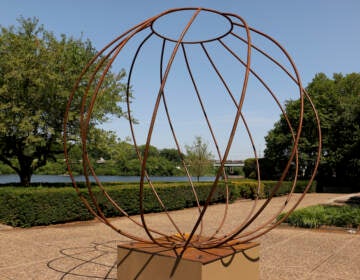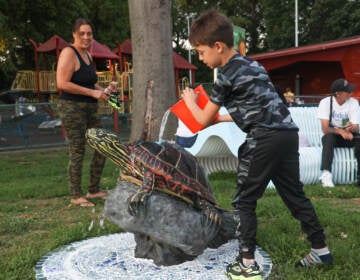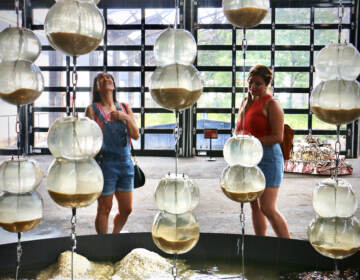Take me to the river: Academy of Natural Sciences sends visitors outside to the Schuylkill
“How to Get to the River” at the Academy of Natural Sciences of Drexel University wants visitors to experience Philly’s watershed first-hand.
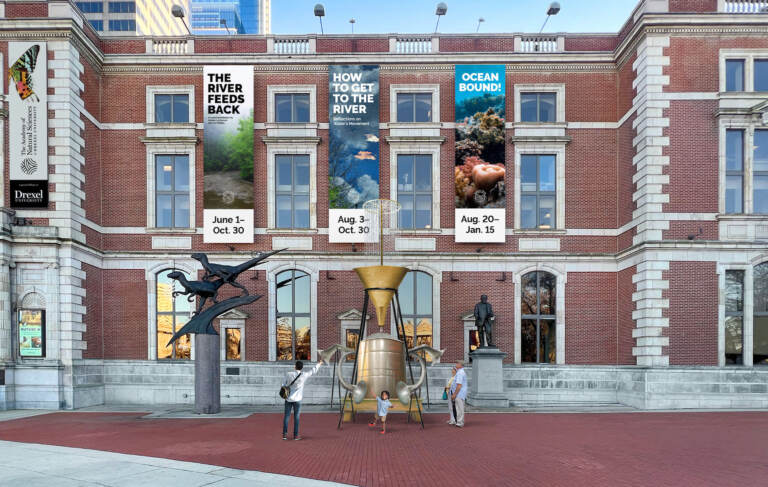
''Attunement'' a monumental outdoor sculpture, captures the action of water droplets collecting and illustrates how water from the atmosphere transfers to larger bodies of water. It will be installed outside the Academy of Natural Sciences as part of the Watershed Moment exhibit. (Rendering provided by the Academy of Natural Sciences)
The new exhibition at the Academy of Natural Sciences of Drexel University asks visitors to turn around and go right back outside.
“How To Get to the River” is a 1.5-mile loop from the Academy to the Schuylkill River and back again. Along the way are about 40 pieces of poetry, sound installation, artwork, and interactive signage that attempt to bring people into a closer appreciation for the watershed below their feet, often made invisible by the built urban environment.
A swirling mural on the sidewalk marks where Minnow Run used to run in the 19th century before it was buried under the street grid. That waterway has since become nonexistent.
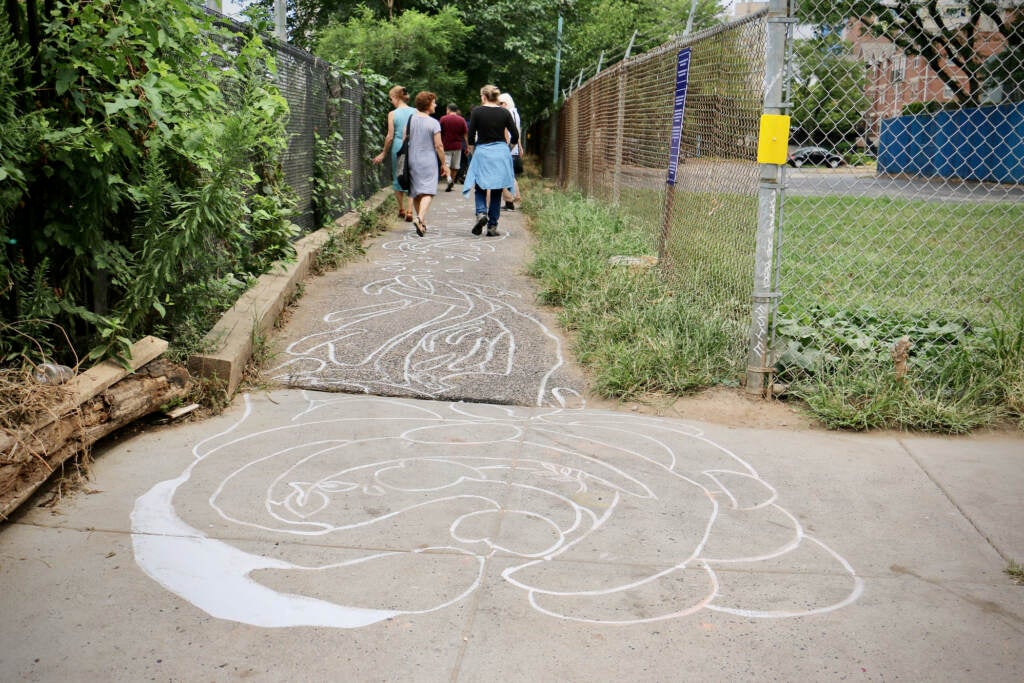
A pair of haiku are posted to a street sign that point out the presence of storm drains that lead to the river.
In Coxe Park, a small pocket park along Cherry Street, pedestrians can sit on benches and hear a composition by clarinetist Shabaka Hutchings come from speakers set in the landscaping. A pair of nearby maps shows the small creeks that used to run through Philadelphia’s geography in the early 19th century, compared with a modern map of Philadelphia’s network of sewage and stormwater conduits.
On the floor of the park are decals that explain and remember the former landscape of creeks.
“I think of these creeks often: when my feet hit the ground, when my friend and I hear the sound of rushing water through the manhole cover, when it rains,” reads the decal.
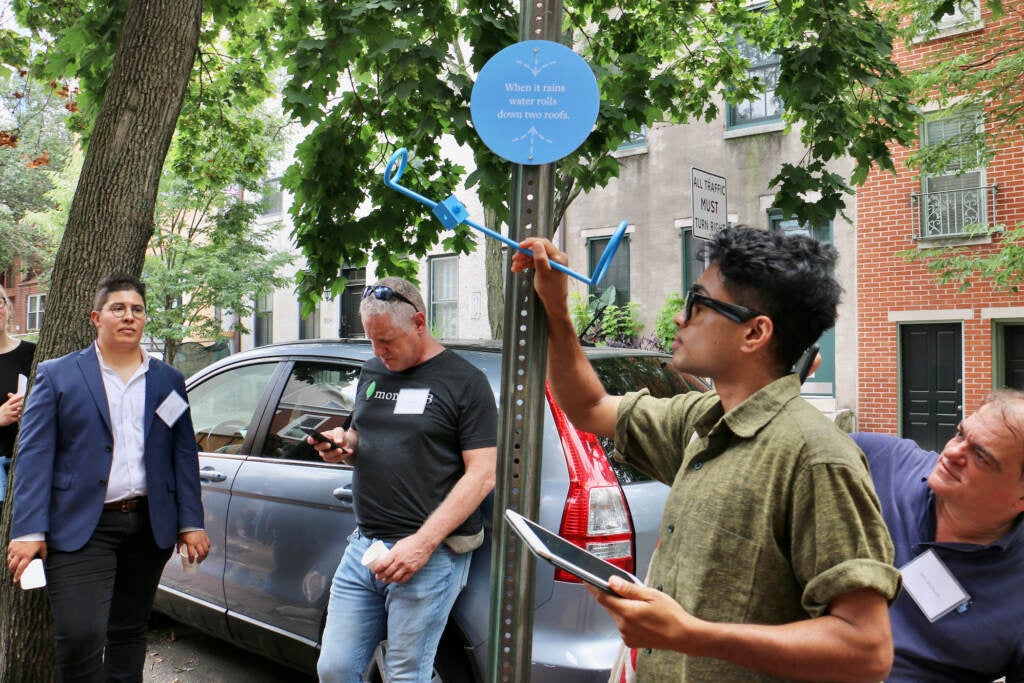
All the written parts of “How to Get To the River” were created by Laia, a multimedia artist who developed the piece with the Philadelphia theater company New Paradise Laboratories.
“The intention of the text, our experience design, and the art that we commissioned from the illustrators is to offer people a ramp into modes of observation,” they said. “To be attentive and present with the environment that’s around them in an effort to have a closer connection to the watershed that they’re quite literally moving through when they go through our experience.”
“How to Get to the River,” launching on August 3, is one of the four parts of the Academy’s Watershed Moment, a multi-phase series of artistic commissions highlighting the city’s relationship to its own watershed.
The first piece, “The River Feeds Back,” opened in June inside the Academy. It is an immersive sound installation by Annea Lockwood and Liz Phillips that brings to life the sound beneath the surface of the Schuylkill River. Recordings made with underwater microphones capture the clicks, trills, and rattles made by water life that is normally not heard by human ears, are used to build a sound composition.
The rest of Watershed Moment is outside the Academy. “Attunement” is a large sound sculpture placed at the steps of the Academy. The steampunk-style contraption is made from reclaimed industrial parts amplifying the sound of water drops. It is expected to be installed and operating next week.
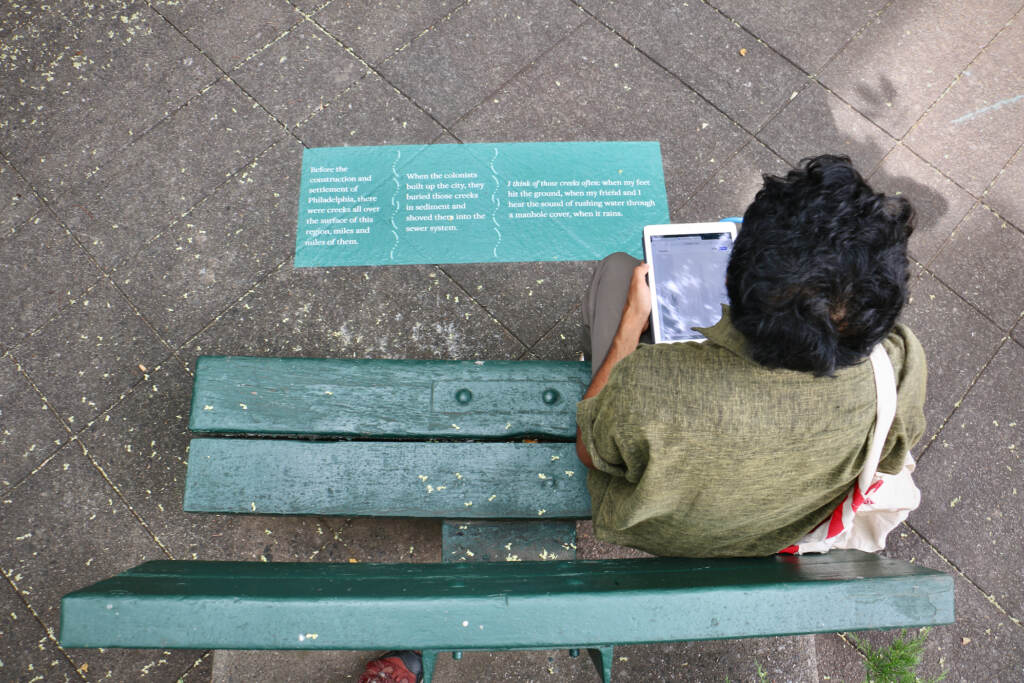
“How to Get to the River” leads people to the fourth piece, “Inside the Watershed,” a gazebo built along the Schuylkill River Trail with speakers that envelope sitters in the sounds of the river, designed by artist Liz Phillips.
Watershed Moment is the first large-scale outdoor visitor experience the Academy has ever attempted in its 210-year history.
President and CEO Scott Cooper said this kind of exhibition, featuring commissioned pieces set in public spaces, could only be possible with the resources the Academy is afforded by being part of Drexel University. The University acquired the Academy in 2011.
“When you’re creating exhibitions today, you have to recognize that a lot of the information you’re sharing can be gotten from a phone,” he said. “How does a museum pivot from just sharing information to inspiring ideas? Not just talking about a history, but exploring the issues of the future. That’s what a great museum can do, and it’s what we think they have to do. Nobody wants museums to be replaced by Google.”
To make “How to Get to the River,” the Academy brought on New Paradise Laboratories, a long-time experimental theater company that is better known for making performance work. This piece is not of that ilk. Participants are on their own during the experience, led by a map, a series of yellow acrylic signs posted marking the route, and a series of cards given at the Academy that explain things along the way. There is no performance element in “How to Get to the River.”
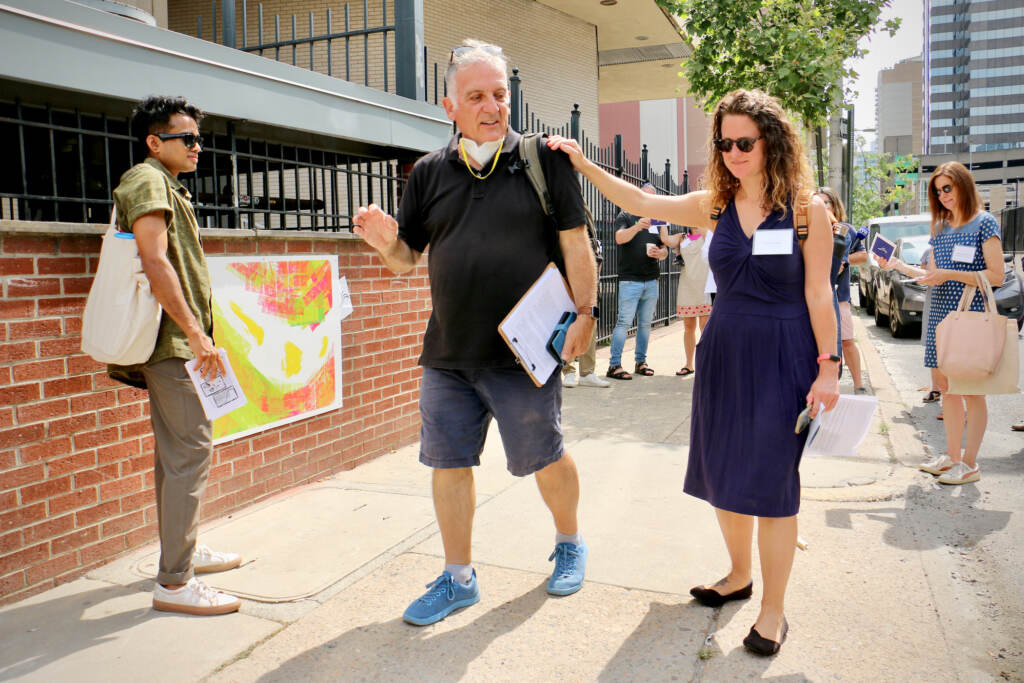
“We have been slowly pivoting over the last few years to creating pieces we like to think of more as experiences, than as plays,” said New Paradise founder Whit MacLaughlin. “There’s a drama to this experience that we’ve surfaced very gently. We’re not yelling about the end of the world. We’re just wanting you to care about this, to put into context their experience and have a new way of thinking about bodies of water.”
While there may be a quiet drama on view in the city’s natural watershed, “How to Get to the River” does not present a story, per se, that participants follow. Rather it is a series of artistic cues that invite people to take closer notice of what is around them.
“Wake up,” said MacLaughlin. “Awaken to the details of something that they take for granted, or can take for granted.
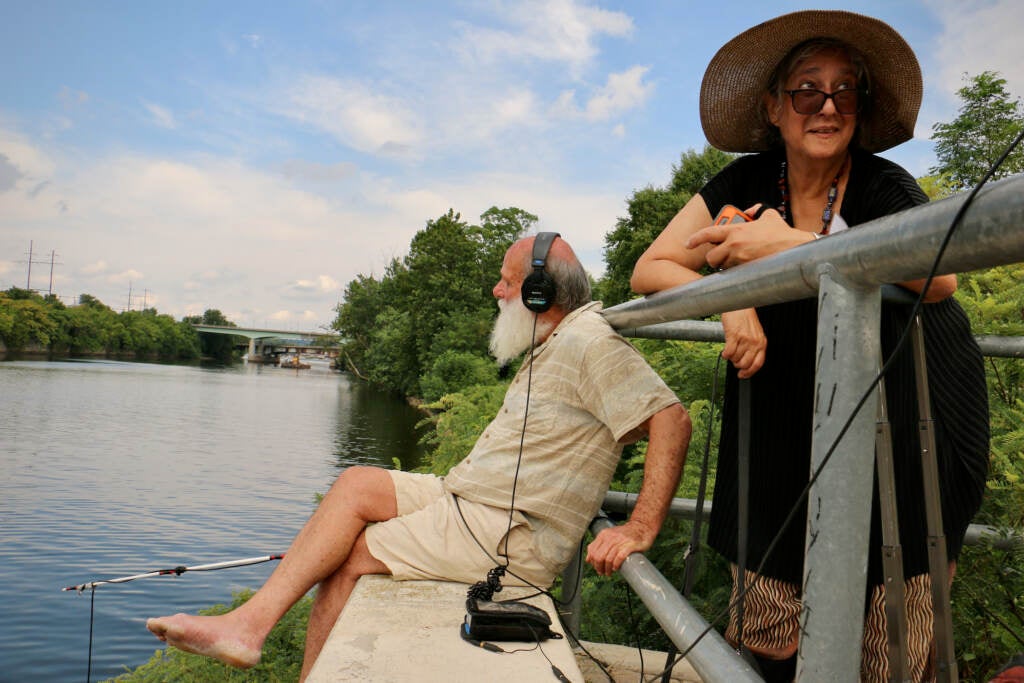
Laia said they were inspired by the idea of the path a water drop takes from Philadelphia rooftop downspouts and dripping off the leaves of trees into sidewalk gutters and down to the river, and the possible memory that water accumulates during the journey.
They were also inspired by, “The Site of Memory,” an essay by Toni Morrison, where she compared floodwaters to memory returning: “All water has a perfect memory, and is forever trying to get back to where it was.”
One of the installation moments is a line made on a brick wall of a private home (the entire piece required 30 individual permissions from landowners) about three feet above the sidewalk. It represents the high water mark from the flooding of Hurricane Ida in 2021, when the Schuylkill River escaped its banks.
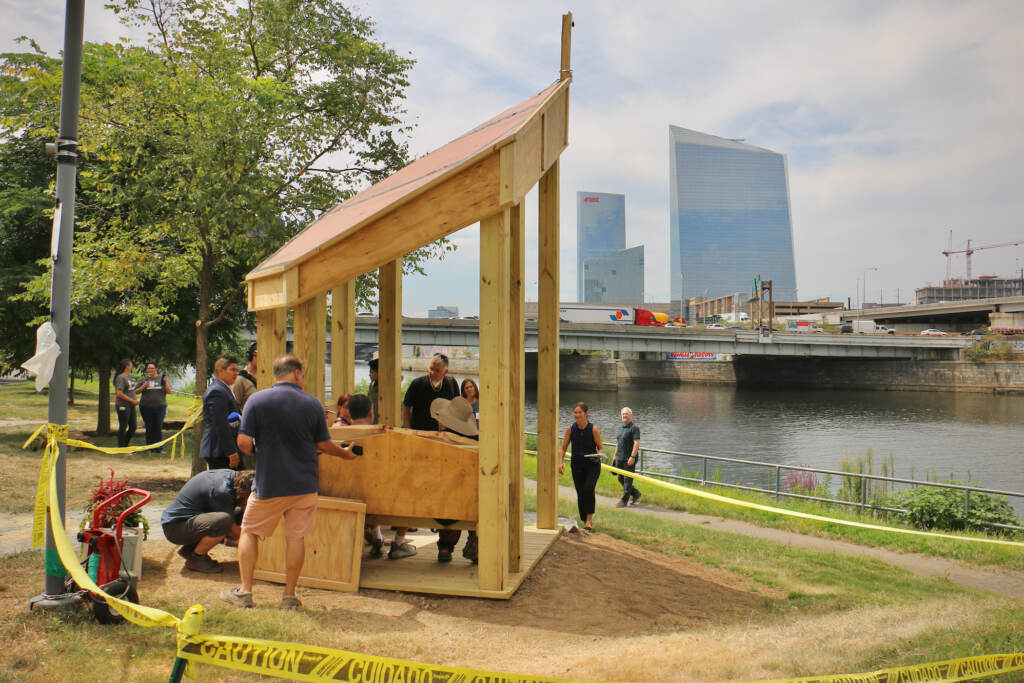
Laia compares water to memory flowing away through the watershed.
Sometimes, just like memory, water flows back in the opposite direction as a flood.
“I was particularly thinking about what has been quite literally and figuratively drowned in the history of colonization and settlement that happened here in Philadelphia,” they said. “There’s a lot in the last few blocks of the walking experience that particularly attends to that memory and that history.”
“How to Get to the River” will be on view until October
WHYY is your source for fact-based, in-depth journalism and information. As a nonprofit organization, we rely on financial support from readers like you. Please give today.





